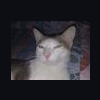737 MAX 53 voti
-
1. Volerai su un 737 MAX quando e se rientrerà in servizio?
-
Sì6
-
No23
-
Vorrei quantomeno attendere abbastanza24
-
Si prega di accedere o registrarsi per votare a questo sondaggio.
Featured Replies
Avevo finito da poco di pranzare e mi arriva una notifica da FR24 che mi ha fatto alzare gli occhi al cielo, intimorito... 😅
Non sapevo la cosa fosse così imminente: https://fr24.com/GLO4104/26430f63
Sbaglio o la notizia è passata un po' in sordina?







Crea un account o accedi per lasciare un commento